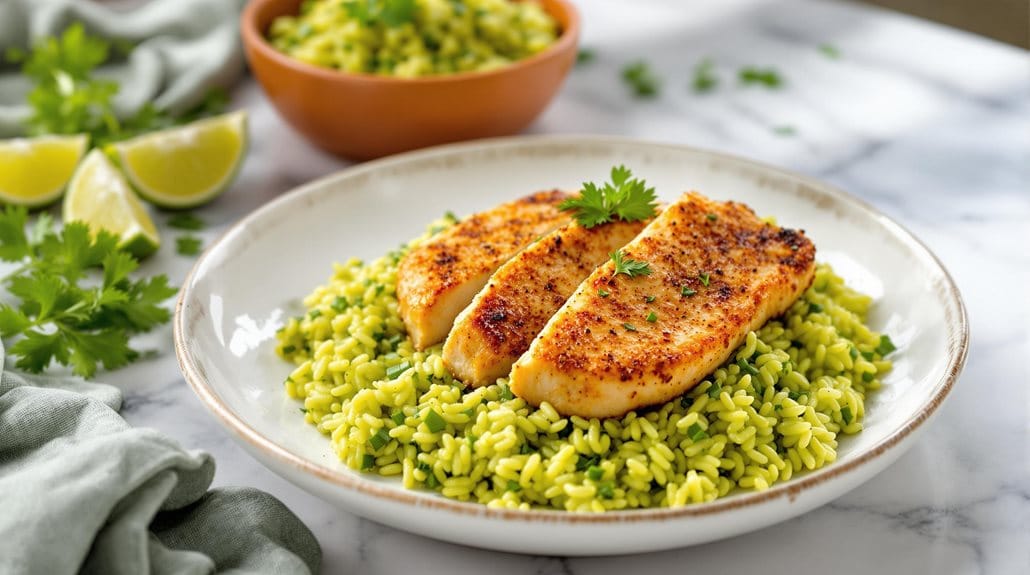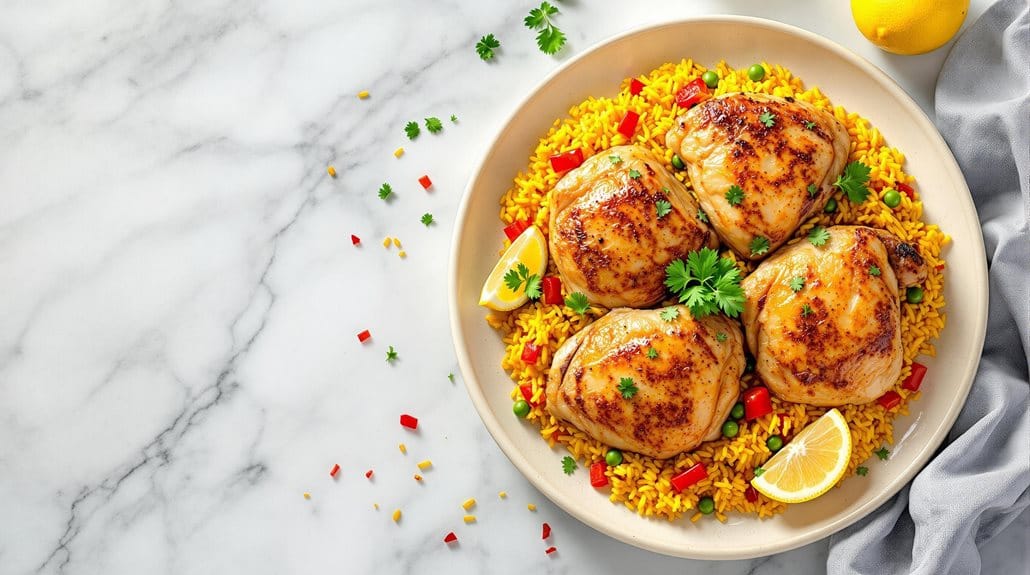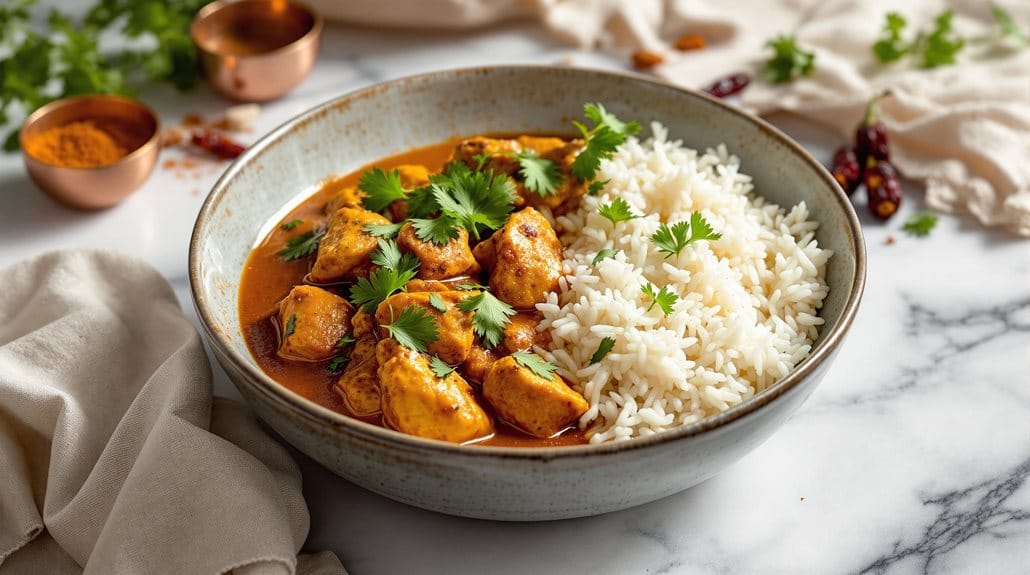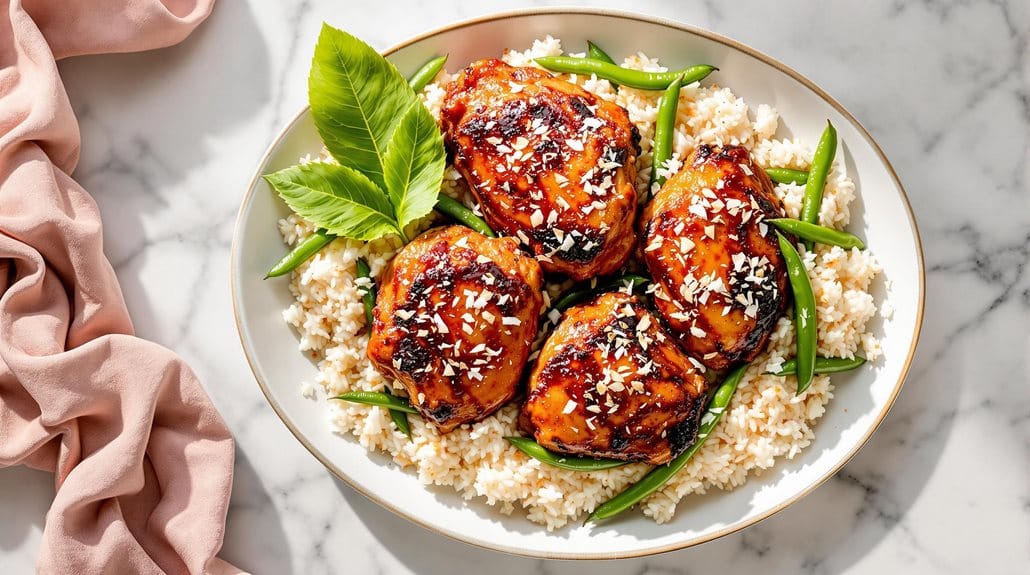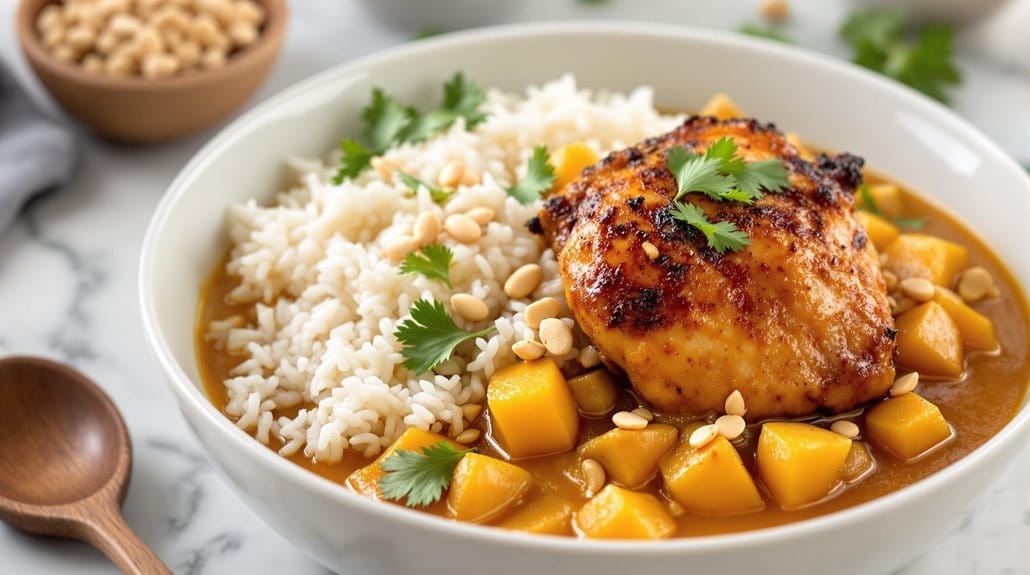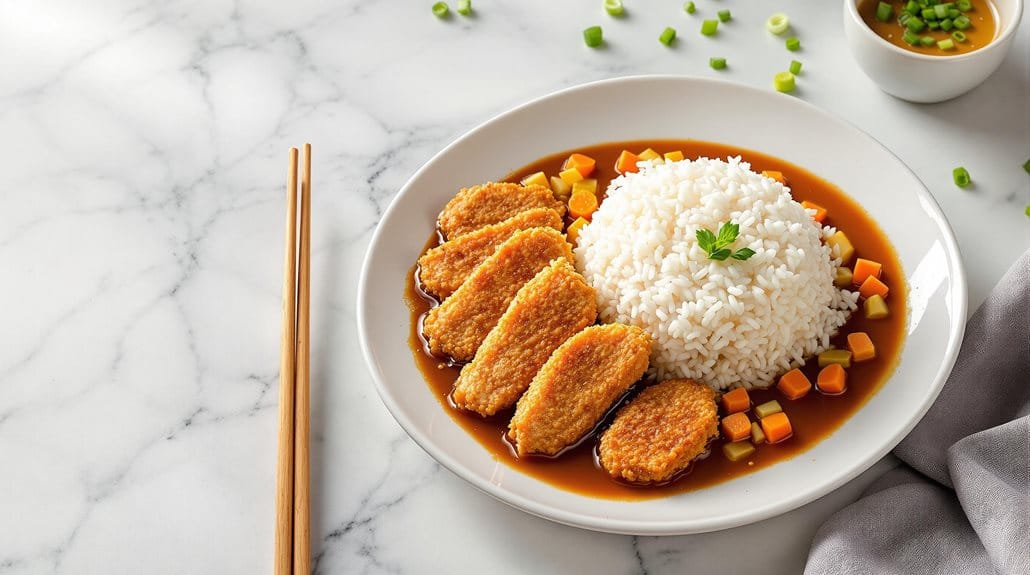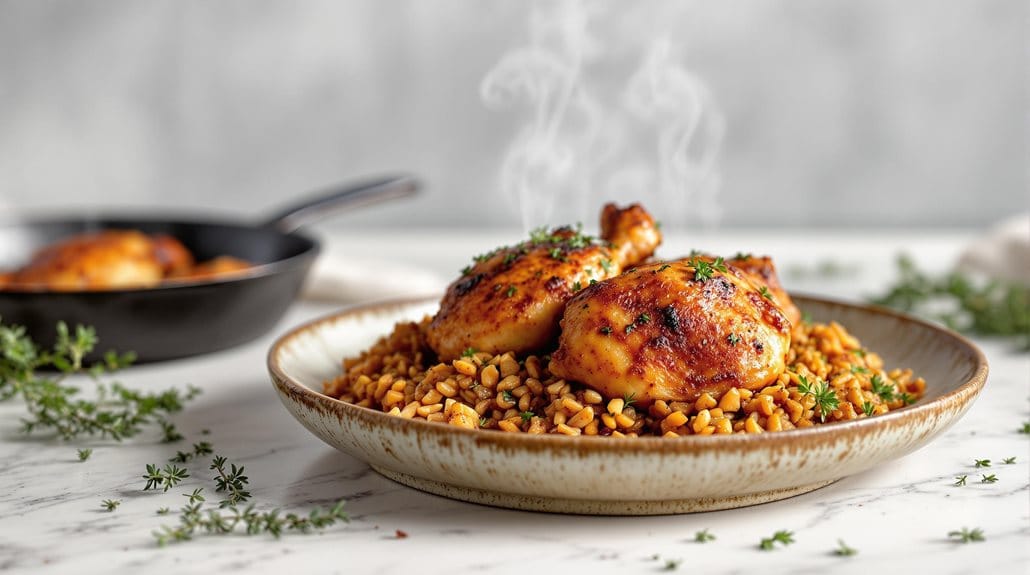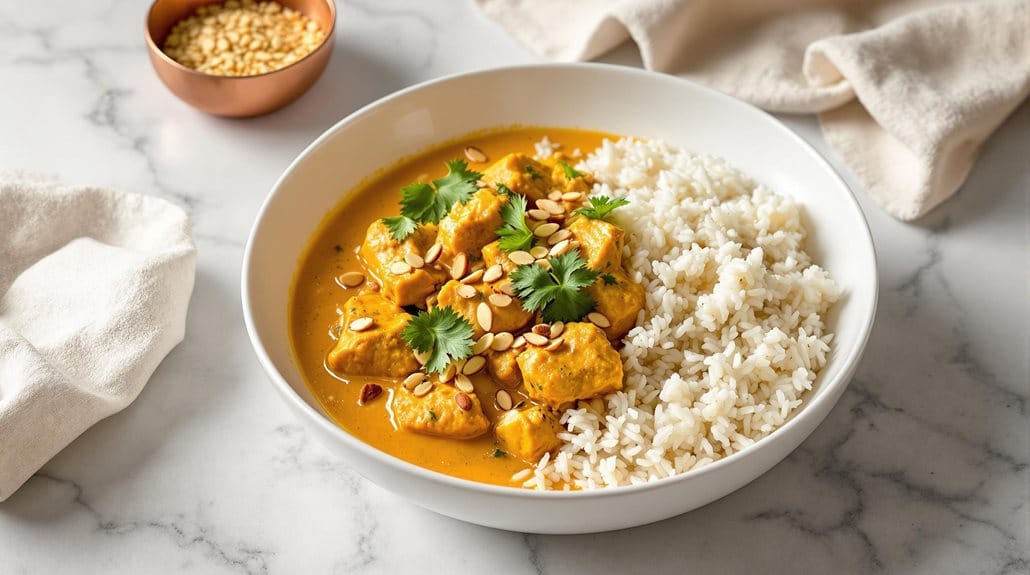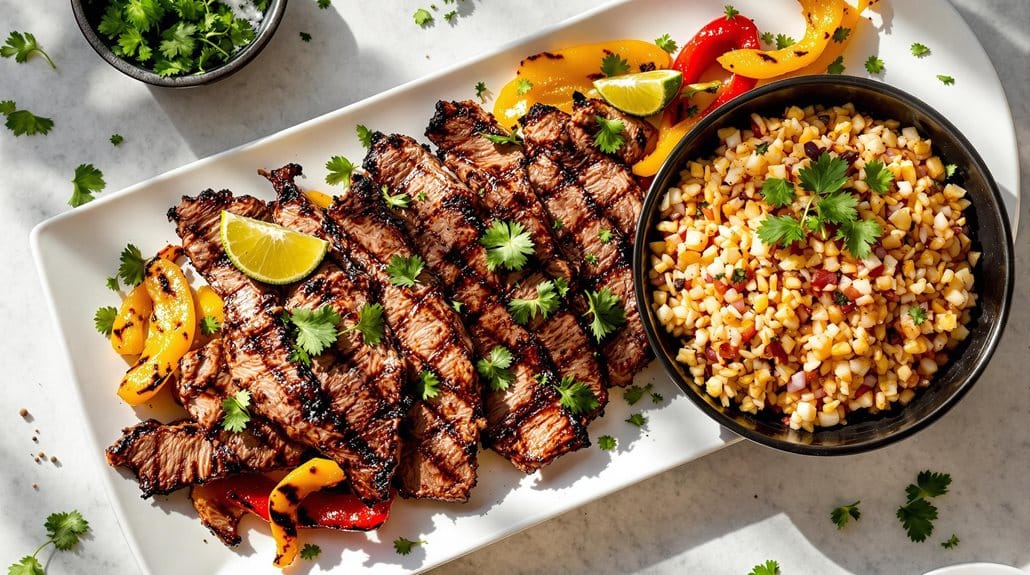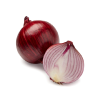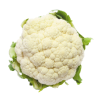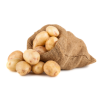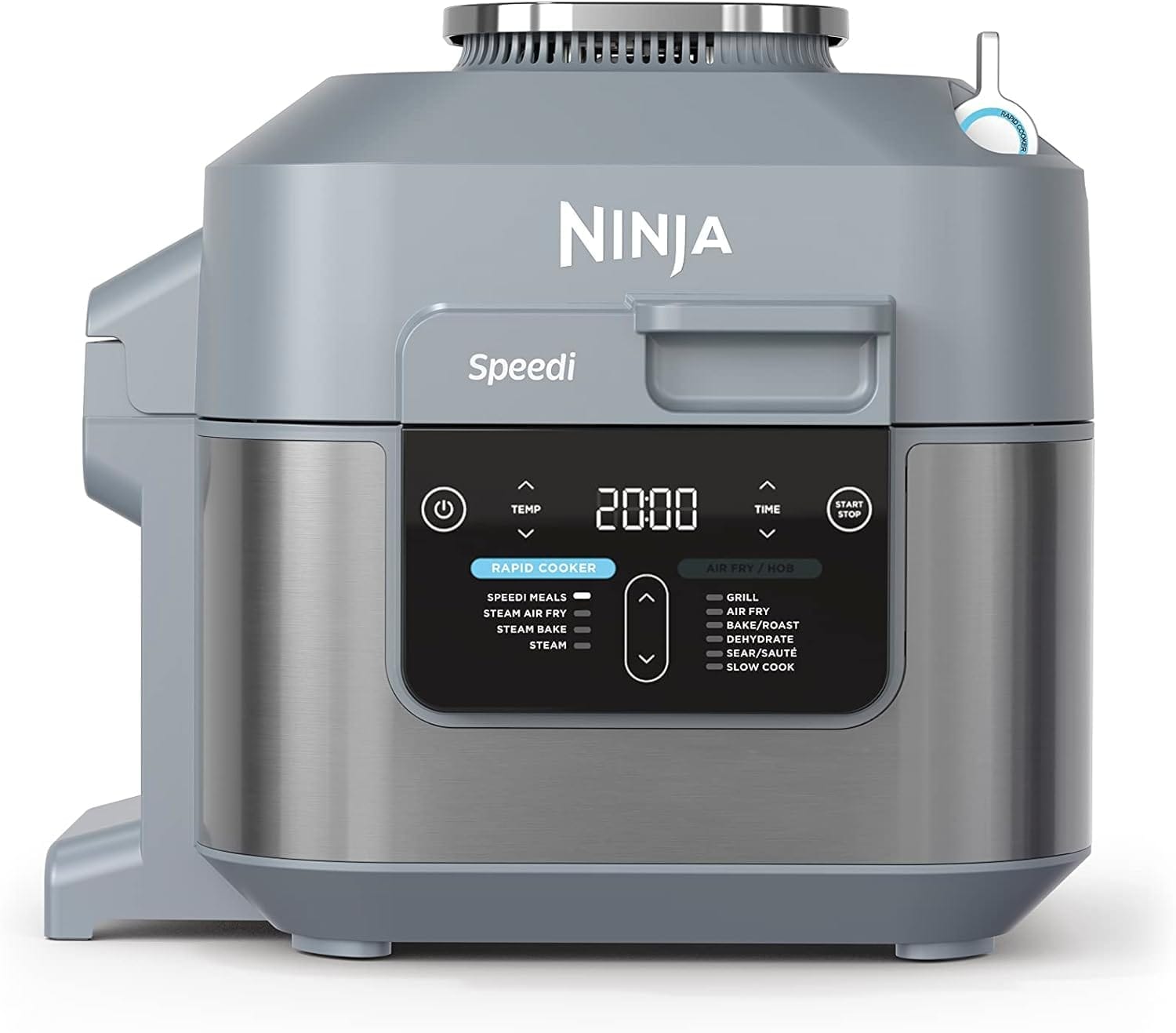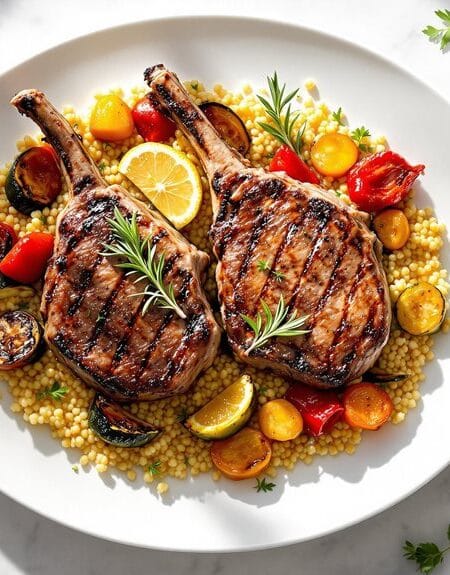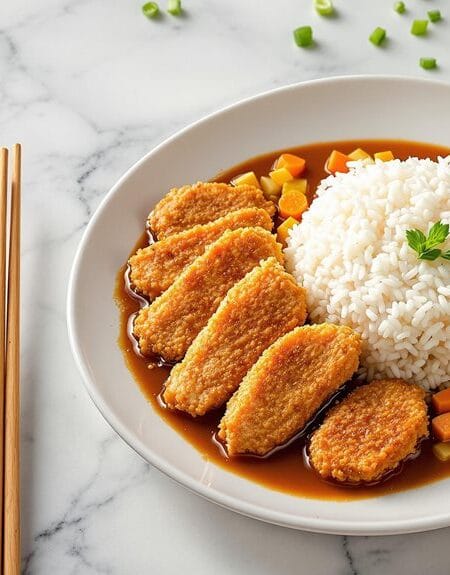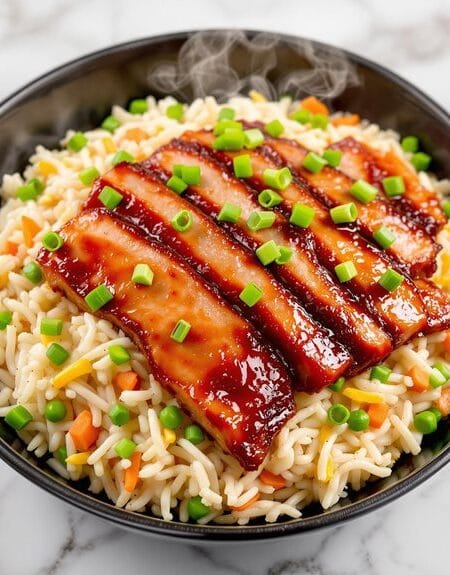| This aromatic vegetable biryani features layers of fragrant basmati rice and spiced vegetables, crowned with irresistibly crispy fried onions made right in the Ninja Speedi. Perfect for feeding a crowd at special occasions or meal prepping for the week, this one-pot dish delivers restaurant-quality results with minimal clean-up. For the fluffiest rice texture, make sure to rinse the basmati rice thoroughly until the water runs clear before cooking. |
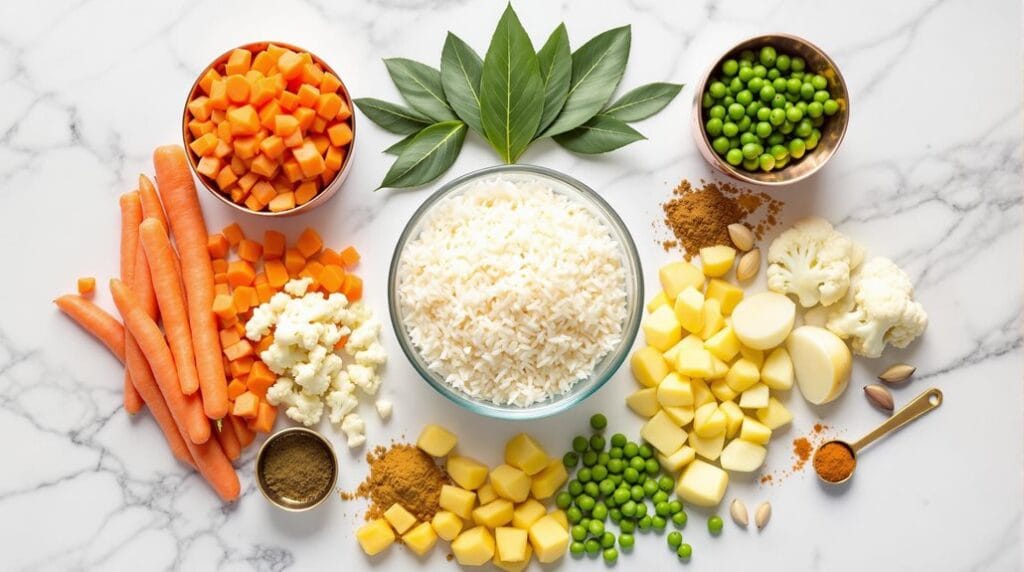
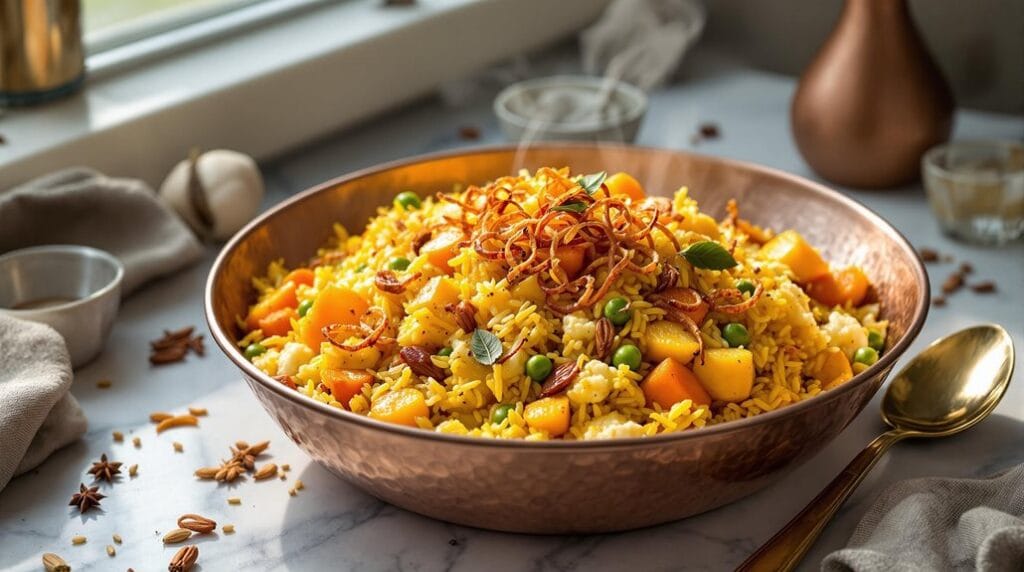
Vegetable Biryani With Crispy Onions in Ninja Speedi
Description
This aromatic Indian rice dish combines fragrant basmati rice with seasonal vegetables and warm spices, all cooked to perfection in the Ninja Speedi. The unique dual-cooking function allows the rice to steam while the vegetables develop a delicious roasted flavour.
The Speedi's innovative technology guarantees the rice remains fluffy while the vegetables achieve the perfect texture, creating layers of flavour that traditionally would require multiple cooking vessels and considerable time.
Ingredients
Instructions
Bottom Pot:
- Mix rice, vegetable stock, 1 tablespoon ghee, turmeric, bay leaves, and cardamom pods.
- Add salt to taste and stir to combine.
Crisping Tray:
- Toss vegetables with remaining ghee, biryani masala, and salt.
- Spread vegetables evenly on the crisping tray.
Cooking:
- Place the bottom pot mixture in the Speedi.
- Position the crisping tray with vegetables above.
- Close lid and select Speedi Meals function.
Set temperature to 200°C/400°F and timer to 20 minutes.
- Once done, let rest for 5 minutes before opening.
- Gently mix the roasted vegetables into the rice before serving.
Nutrition Facts
Servings 4
- Amount Per Serving
- Calories 632.95kcal
- % Daily Value *
- Total Fat 12.33g19%
- Saturated Fat 1.24g7%
- Trans Fat 0.08g
- Sodium 1662.25mg70%
- Potassium 1349mg39%
- Total Carbohydrate 117.9g40%
- Dietary Fiber 11.4g46%
- Sugars 9.84g
- Protein 15.02g31%
- Vitamin A 278.06 IU
- Vitamin C 115.05 mg
- Calcium 141.69 mg
- Iron 7.11 mg
- Vitamin E 2.84 IU
- Vitamin K 41.86 mcg
- Thiamin 0.84 mg
- Riboflavin 0.26 mg
- Niacin 7.04 mg
- Vitamin B6 0.96 mg
- Folate 150.41 mcg
- Phosphorus 310.14 mg
- Magnesium 102.18 mg
- Zinc 2.51 mg
* Percent Daily Values are based on a 2,000 calorie diet. Your daily value may be higher or lower depending on your calorie needs.
Note
Tips: For extra flavour, soak the rice for 30 minutes before cooking and add a pinch of saffron to the stock. If vegetables are cut larger, they may need an extra 2-3 minutes of cooking time. To prevent the rice from becoming too wet, make sure the rice is well-drained after rinsing. For a crispier top layer, increase the temperature to 220°C/425°F for the final 2 minutes of cooking.


